The Bookmark ordered some Paper-Oh A5 Cahier Circulo notebooks for me; they’re a lovely design and, like all Paper-Oh products, are solidly constructed.
They ordered more than I need for personal consumption, so if you’re in the market, grab them while you can.
The Bookmark, by the way, is killing it in the notebook department: be sure to check out the display near the back cash that showcases some new lines.
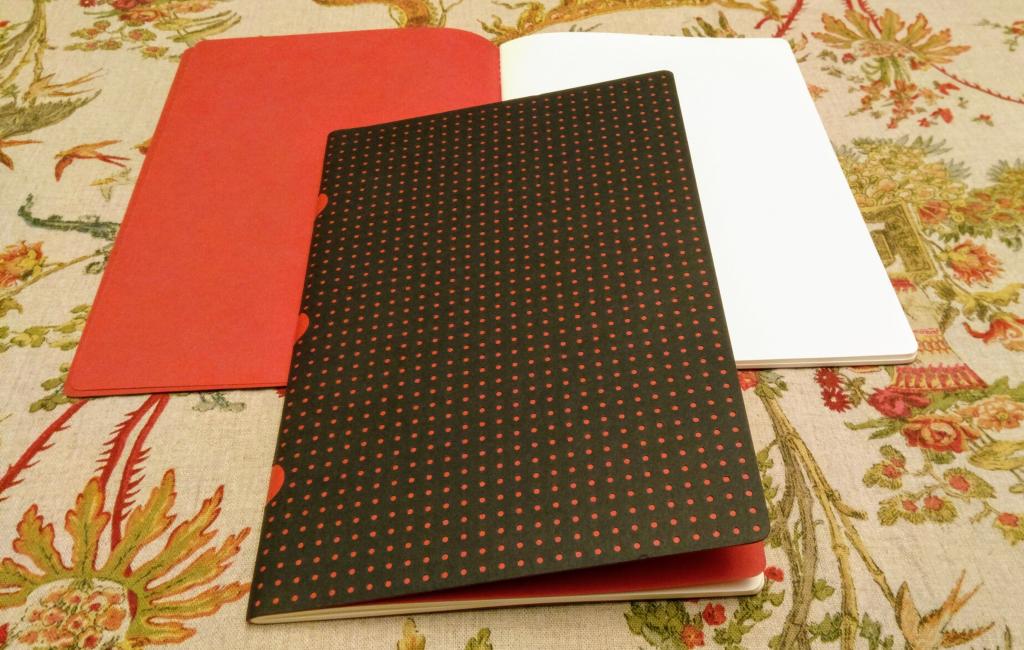 ,
, 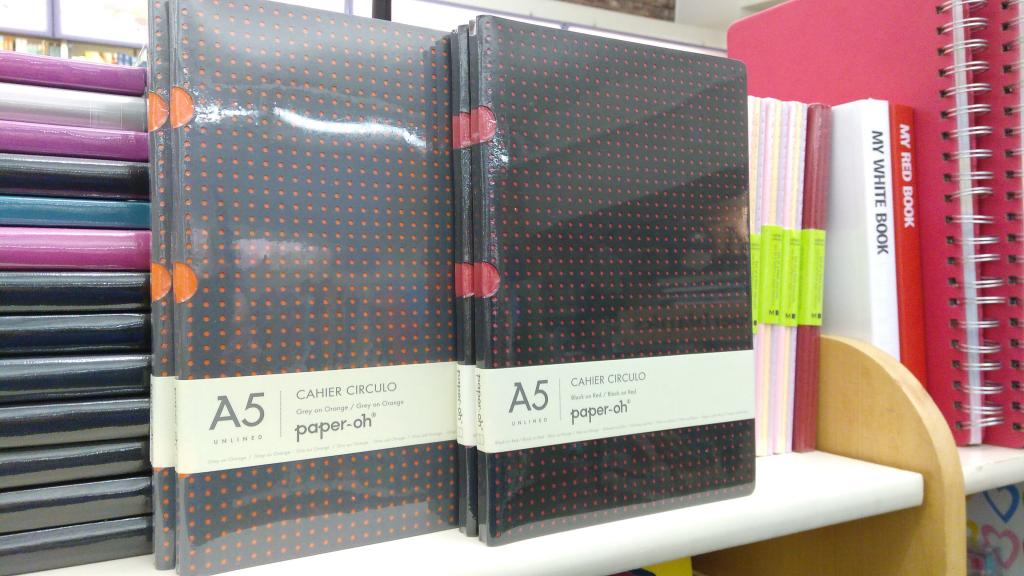
The exoskeleton at Province House gained lights this week, and in doing so continued its drive toward resembling the set of a Ridley Scott film.

Back in April I wrote about the curious case of South Shore Villa, a community care facility in Crapaud, PEI that’s bisected by the Queens County-Prince County boundary; in this map it’s shown as property 775072, right in the middle, and the county line is shown in green:
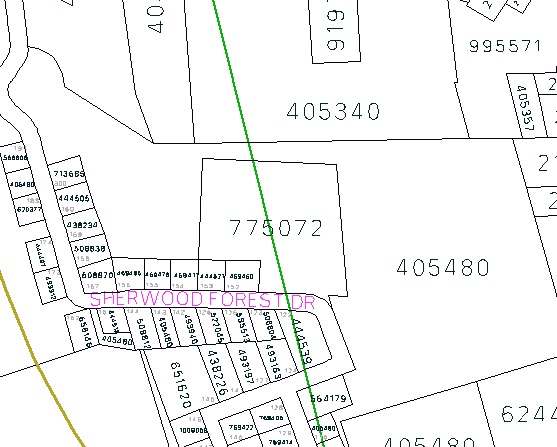
My friend Ray was instrumental in the development of South Shore Villa back in 1990, and, knowing that I’d be in Crapaud again yesterday, I asked him if there was any obvious physical manifestation of the county line boundary on the property.
Ray told me to look for a concrete pole in the forest in front of the facility and, sure enough, that’s exactly what I found when I went looking yesterday:
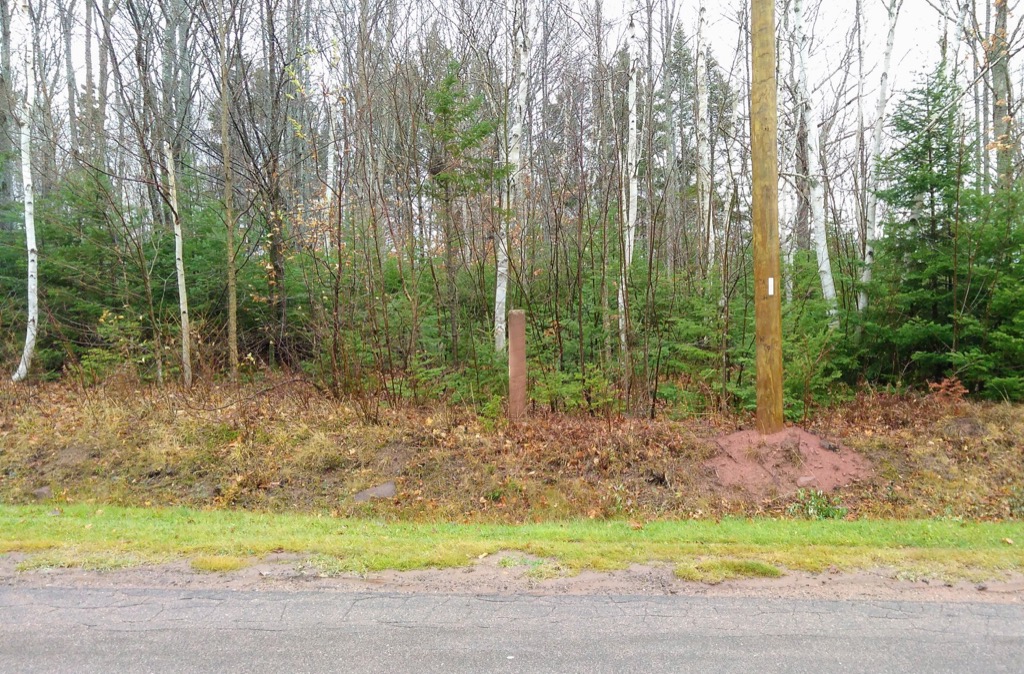
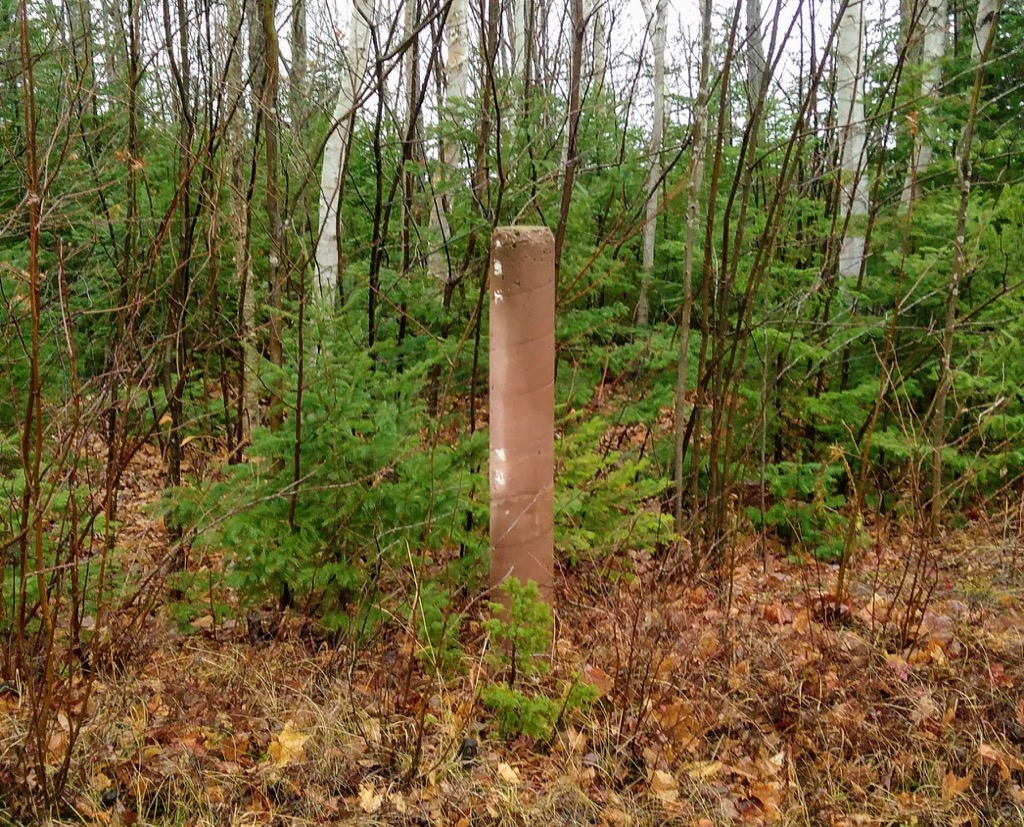
The pole was set there, Ray tells me, in the spring of 1990; it’s in remarkably good shape for a 27 year old piece of concrete.
I love marks on the earth that make the fictional non-fictional.
If you’re out and about looking for the pole, set your GPS for 46.2371944 N, 63.5054333 W and you’ll find it. Or if you’re there as you read this, you’ll know right where you are on the surface of the Earth.
After several years of germination in the USA, Amazon is bringing its Echo line of “smart speakers” to Canada. You can order now for delivery on December 5.
We’ve had a grey market Echo in our living room for most of this year; if I had to ballpark how we use it I’d say:
- 65% “Alexa, turn on the living room light” and “Alexa, turn off the television” – voice commands that control appliances plugged into WeMo outlets.
- 25% playing music from Spotify (“Alexa, play music by Bjork”).
- 10% checking the weather, querying Wikipedia, and various other skills.
Among the “various other skills” are two that I’m particularly proud of, as they’re ones I created:
- “Alexa, ask Farmer’s Almanac about today” – get a brief daily update from The Old Farmer’s Almanac.
- “Alexa, ask City Cinema what’s playing tonight” – find out what movie is playing tonight at City Cinema in Charlottetown.
Both skills are also usable from Google Home and Google Assistant (just say “Hey Google” instead of “Alexa”); Google’s devices have been available in Canada for most of the year, and you can pick them up in places like Best Buy.
One of the ironies of developing the Alexa skill for City Cinema is that Amazon gives me a credit of $100 a month against my Amazon Web Services bill. I used Amazon Web Services to host this website (and City Cinema’s), and the monthly bill for a reserved EC2 instance is must less than $100 a month. As a result, I haven’t paid a bill for AWS since February, and I’m gradually accumulating more and more credit.
The operation of a bidirectional single track line has obvious dangers, the most serious of which is the possibility of two trains colliding from opposite directions. The simplest method of controlling such a line is to have only one train operational, on the basis that a single train cannot collide with itself.
This was the scene at The Guild tonight, from our seats high atop Row N, waiting for The Shop Around the Corner to start.
Except, as we found out when people with identical tickets for our seats arrived shortly before showtime, I had mistakenly ended up with tickets for last night.
We quickly fled the hall, and, once in the lobby personable Guild staff allowed us to exchange our tickets for tomorrow.

The strange thing is that he figured out how to cover himself with a blanket all on his own.

When you’re a coder, you spend a lot of your life looking at things like this:
<?php
$ate_the_donuts = TRUE;
?>
That’s a variable called $ate_the_donuts, and that line of code sets it to equal “true.”
Because coding is often simply about moving bits of code around from place to place in a file by copy-and-paste, frequently there’s a need to select $ate_the_donuts in a text editor, and a really easy way to do that is to double-click on it.
For example, in Sublime Text, the program I use for most of my coding, I can double click on $ate_the_donuts, and the entire variable name gets selected, like this:
This is exactly what I want to happen.
However, often I want to copy code from web pages into my text editor; in a perfect world things would work the same way.
But they don’t.
In Firefox–going back to the very beginning and continuing into the version released last week–double-clicking on the same variable name works differently:
Instead of selecting the entire variable name, Firefox just selects part of it.
This is because the logic in Sublime Text and in Firefox for figuring out “what’s a word” when I double-click is different.
In Sublime Text, an underscore character is considered part of a word.
In Firefox, an underscore character isn’t considered part of a word. And so the select stops when one is encountered.
A bug report on this for Firefox was filed 15 years ago, in March of 2003: underscore should be part of word, not punctuation.
The bug report is still open. There’s been discussion back and forth over the years about how to approach this, but nothing’s ever been implemented.
So I was happy to see a little ripple of activity on the bug yesterday; I agree with the person who updated things: “single behavior annoyance outside of an otherwise great browser experience.”
The nice thing about Firefox is that I can know all about this, and can read the gory details and, if push comes to shove, I can jump into the fray myself and propose a solution. I’m willing to put up with the “behaviour annoyance” to get that open source payoff. This will get fixed. Eventually.
Back in 2005 I pointed to a great CBC resource called InSite that exposed helpful data about CBC Radio programs to the public: the music tracks played on a show, for example, or the rundown of guests.
As the CBC has synergized and commercialized in the years since, valuable, raw public services like this have fallen away; fortunately the historic data is all still available via the Internet Archive. Here’s the 1997 episode of The Vinyl Café that I pointed to, for example, in that 2005 post.
Looking at that now-20-year-old page, I noticed something I’d forgotten about: the MAPLE Code:
Recording Format (Medium): CD
Recording Title (CD or Album): COWBOYOLOGY
Spine: 03-1 CD
Cut Number: 7
MAPLE Code: MAPL
Label Name: STONY PLAIN
MAPL stands for Music, Artist, Producer, Lyrics, and is a system devised by the CRTC to determine “what makes a song Canadian.”
To qualify as Canadian content, a musical selection must generally fulfil at least two of the following conditions:
- M (music): the music is composed entirely by a Canadian
- A (artist): the music is, or the lyrics are, performed principally by a Canadian
- P (performance): the musical selection consists of a live performance that is recorded wholly in Canada, or performed wholly in Canada and broadcast live in Canada
- L (lyrics): the lyrics are written entirely by a Canadian
Canadian radio stations, at least in the 1980s when I was playing records on the radio, would have a condition of license that would set out a commitment to play a certain percentage of Canadian content, and the MAPL system was used to make this determination. As a result, stations, in their program logs, had to record that information, and record companies, in their supplementary materials or liner notes, had to indicate it. That’s why you see that line in the CBC InSite system.
For example, in its 2001 license renewal, Trent Radio, where I used to play records, had, as a condition of license:
The licensee has committed to meet the new regulatory requirements with respect to the percentage of Canadian musical selections from category 2 (35%) and category 3 (12%) that community and campus radio stations must broadcast each broadcast week.
The “categories?” Well, that’s complicated, but Category 2 is “popular music” and Category 3 is “special interest music.”
I don’t know whether the “cancon” rules that gave rise to MAPL achieved the over-arching goal of protecting Canadian music from obliteration by America, but I do know that in the small world of community radio producers that I was once a member of, our knowledge of who was “Canadian” and who was not was heightened. And that wasn’t such a bad thing.
This is a lovely documentary about the temporary closing of the Glasgow Subway in 1977 for refurbishment.
 I am
I am